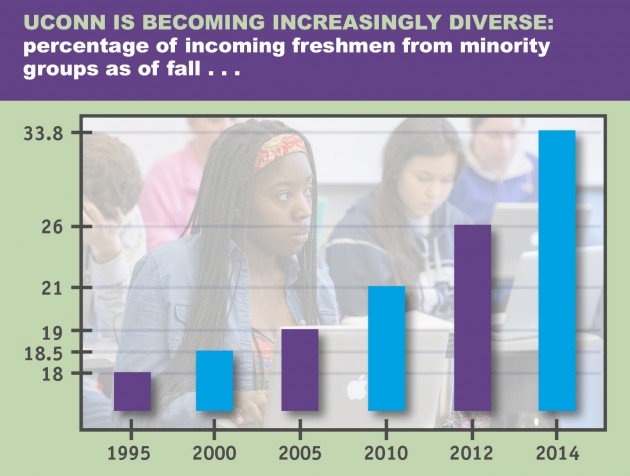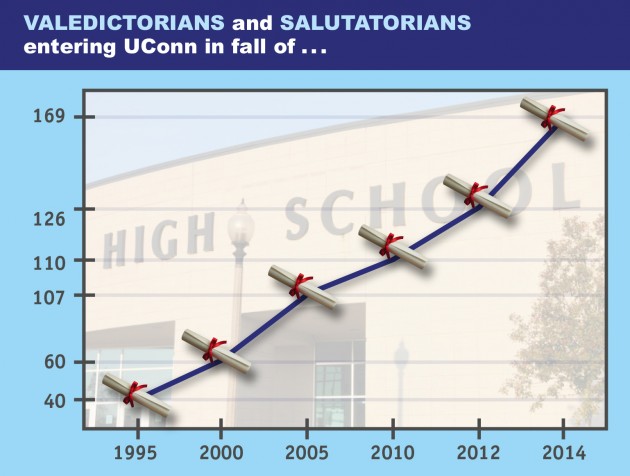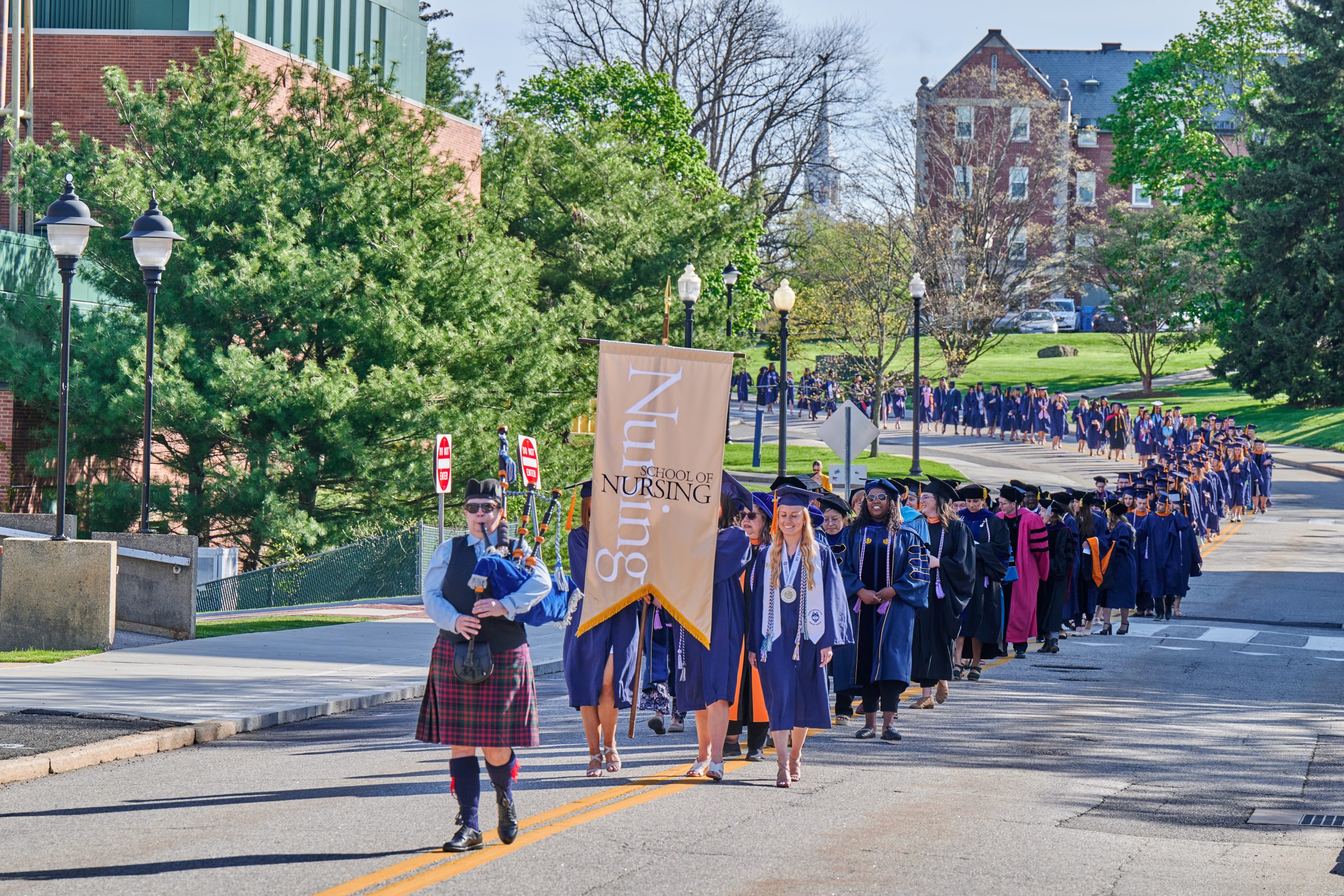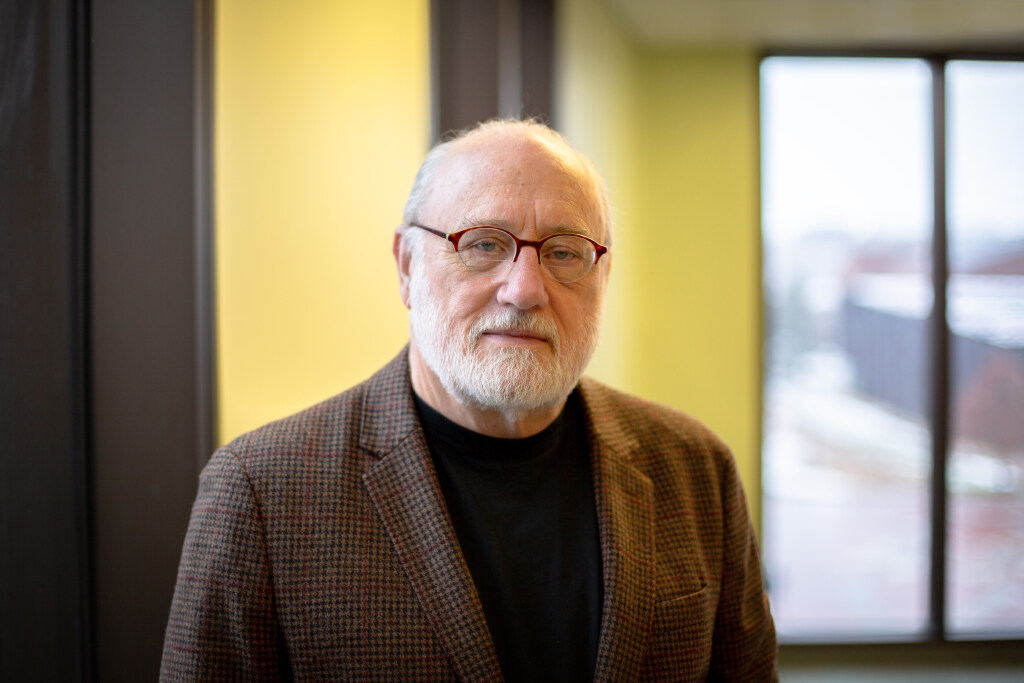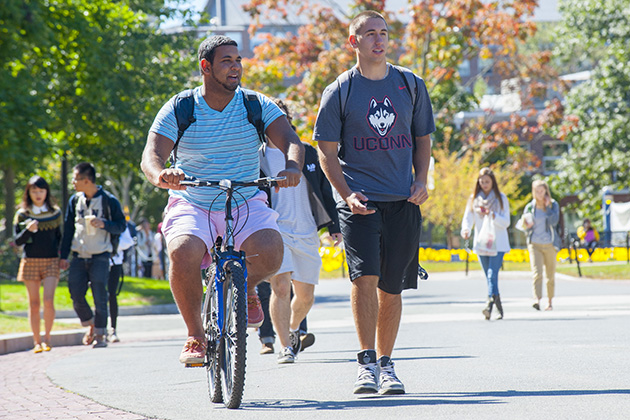
Almost 6,000 new Huskies, including the most diverse and high-achieving freshman class to date, will be joining other underclassmen returning this fall to Storrs and UConn campuses throughout Connecticut.
Students start moving in to residence halls on the Storrs campus beginning Friday, and fall semester classes begin next week at all of the campuses.
The new students include almost 3,600 freshmen and 800 transfer students arriving in Storrs, and almost 1,400 freshmen and more than 200 transfers attending the UConn campuses in greater Hartford, Stamford, Waterbury, Avery Point, and Torrington.
In recent years, each incoming freshman class has set the bar higher for those coming afterward, and this year’s newcomers are no exception.
With an average SAT of 1234, the Class of 2018 outpaced last year’s freshmen by 1 point, continuing an upward trend that has supported UConn’s momentum as it pushes toward becoming one of the nation’s top-tier public research institutions.
The freshman class is also by far the most diverse in UConn’s history, with one-third (33.8 percent) of its members representing minority groups. The previous record was 27 percent, set last year.
UConn has been on a strongly positive trajectory for almost two decades, dating to the time when the University and state launched the UConn 2000 infrastructure improvement project in 1995.
“We’re proud to offer a world-class education at a tremendous value, and certainly that is drawing incredible students to our campuses,” President Susan Herbst says.
“By all measures, this year’s freshmen class is the most talented, diverse group we’ve ever welcomed, and those transferring here from other institutions have established strong foundations that will help them thrive at UConn,” she says. “We can be confident of great things ahead, both for our new students and for the University itself.”
If social media are any indication, many of the students joining UConn this fall as freshmen or transfer students are brimming with excitement.
They’ve been counting down the days to move in while using the #UConnBound hashtag on Twitter, and have been trading tips with current students on classes, residence halls, and the Storrs social scene.
The incoming students represent the cream of a very significant crop: Nearly 32,200 aspiring students applied this year for admission, a new record high.
UConn’s applications have more than tripled since 1995, when the University received about 9,900. That’s despite a dip in the number of high school graduates in Connecticut and nationwide.
“The size and talent of UConn’s applicant pool has helped to increasingly raise the University’s caliber in recent years, even as the number of high school seniors in the Northeast is on the decline,” says Nathan Fuerst, UConn’s director of undergraduate admissions. “Most of our admitted students have many schools from which to choose, and their decision to enroll here is a great vote of confidence in UConn’s quality and value.”
UConn has also increasingly become the destination for valedictorians and salutatorians, with 169 joining the ranks of the Huskies this year – up from 165 last year, and from 40 in 1995.
This year’s incoming freshmen also include 505 students enrolling in the highly selective Honors Program, up from 456 last year, and the largest number of Honors Program students to enroll in UConn in a single year.
The average SAT scores of incoming freshmen have jumped from 1028 in 1995 to this year’s average of 1234, and the current initiative in place to hire hundreds of new tenure-track professors has helped push class sizes down to about 16 students per faculty member. It was 18:1 just a few years ago.
The hiring of new faculty is also helping UConn offer more courses, providing more availability for students to help them graduate on time.
At the same time, Connecticut student enrollment at UConn has increased more than 15 percent at the Storrs campus in the past decade. Opportunities for Connecticut residents to attend UConn have been increasing and will continue to do so, with the undergraduate student body projected this fall to comprise about 80 percent of students from within the state.
UConn expects to continue and increase its competitiveness in recruiting highly talented freshman classes and students who’ve established a solid foundation of achievement at other institutions and wish to transfer to UConn.
The faculty hiring push has helped strengthen UConn’s academic core in programs across the curriculum, while the $1.5 billion Next Generation Connecticut initiative is transforming academics and facilities in critical STEM areas (science, technology, engineering, and math) over the coming decade.
In fact, engineering and biology were among the programs that drew particularly high interest from applicants this year, along with psychology – which has been UConn’s largest major in recent years – and business programs.
And just as new students are preparing to start their UConn careers, the University has been busy getting everything in place to ensure they get the most out of the experience, both academically and socially.
That ranges from helping them settle into residential life at Storrs to informing them of career services, health and counseling programs, cultural centers and student activities, and the wide variety of other resources available on the campuses. The University also this year re-established its Dean of Students Office.
“Powerful learning occurs on both sides of the classroom door during college and, knowing that, we’re always working to connect with students and support their personal development and academic success,” says Michael Gilbert, UConn’s vice president for student affairs. “It’s our priority to offer guidance and resources to them so they get engaged on campus with their peers and find comfort and a true home at the University.”


